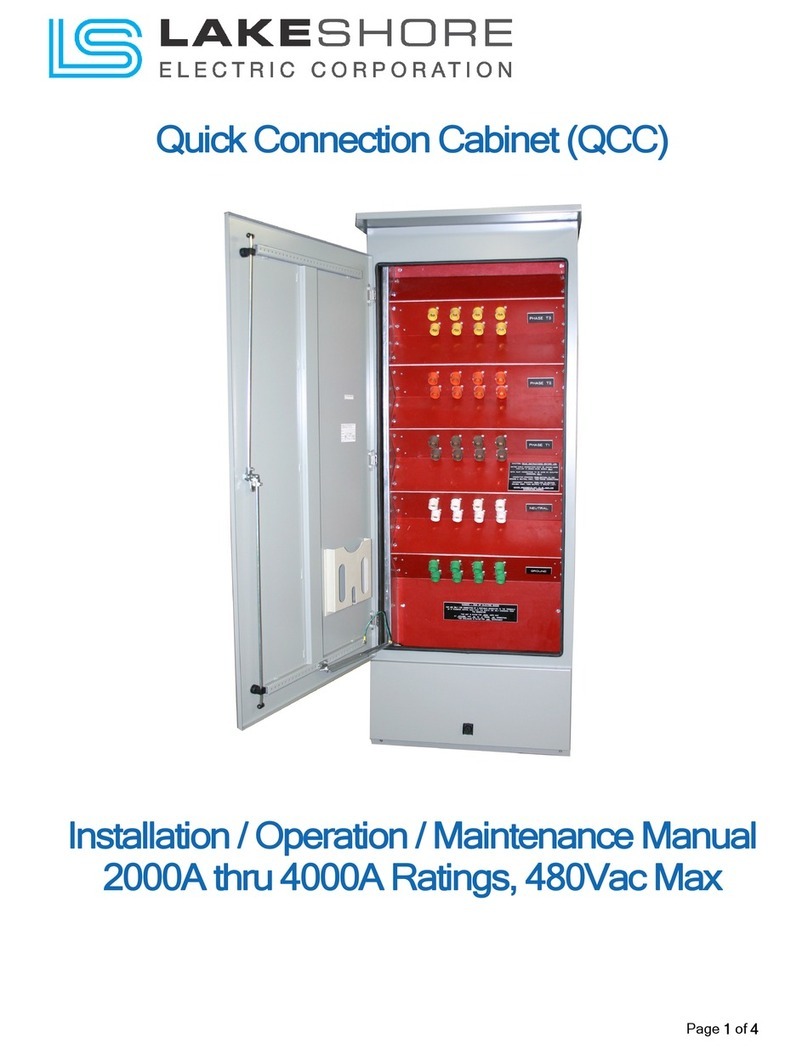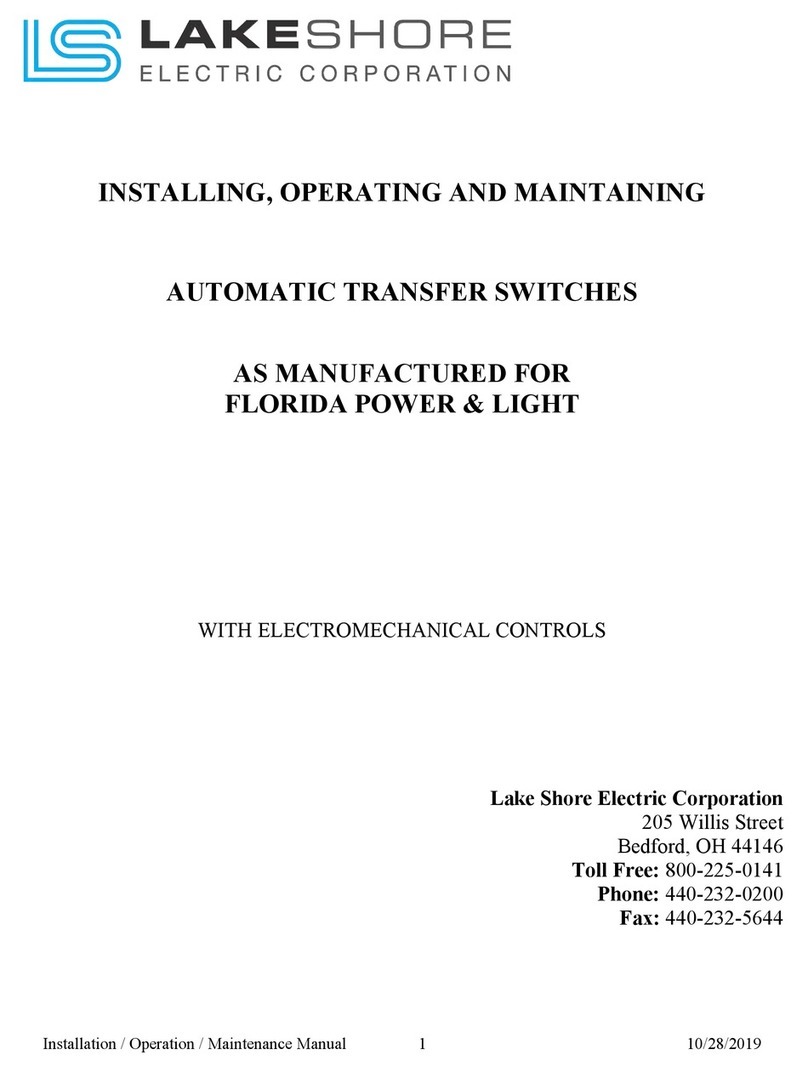
O & M Manual – Insulated Case ATS Rev: October 2020
Publication Number: MN0100700E Version: V10.01.20
Page 6
Table of Figures
Figure 1 - Motor Slip Screws .....................................................................................................13
Figure 2 – Typical Control Wire Terminals for a Utility-to-Generator Setup.................................13
Figure 3 - LSE8600 Panel Mount Dimensions...........................................................................17
Figure 4 - Self Seeking Power Supply .......................................................................................18
Figure 5 - Self Seeking Power Supply (Typical) Wiring Diagram ...............................................18
Figure 6 - Relay Output Expansion Module – DSE2157 .............................................................19
Figure 7 - DSE2157 Dimensions ...............................................................................................19
Figure 8 - Expansion Module (Typical) Wiring Diagram.............................................................20
Figure 9 - DSE2130 Relay (8) Input Expansion Module ............................................................20
Figure 10 - DSE2130 Dimensions .............................................................................................21
Figure 11 - DSE2130 Typical Wiring 1 ......................................................................................21
Figure 12 - DSE2130 Typical Wiring 2 ......................................................................................22
Figure 13 - LED (8) Annunciator Expansion Module - DSE2548................................................22
Figure 14 - DSE2548 Dimensions .............................................................................................23
Figure 15 - DSE2548 Typical Wiring .........................................................................................23
Figure 16 - DSENet Login Instructions ......................................................................................25
Figure 17: DSENet Home Page ................................................................................................26
Figure 18: DSENet Module Setup .............................................................................................26
Figure 19: S1 Remote Control Page..........................................................................................26
Figure 20 - Top PLC Terminals .................................................................................................27
Figure 21 - Bottom PLC Terminals ............................................................................................28
Figure 22 - RS232 Pinouts – View looking into the Male Connector ...........................................29
Figure 23 – RS485 & RS232 Communication Terminals............................................................29
Figure 21 - Editor – Display Screen............................................................................................39
Figure 22 - Editor - Display - Current Date and Time.................................................................39
Figure 23 - Editor – Display Screen............................................................................................40
Figure 24 - Editor - Timers Screen ............................................................................................40
Figure 25 - Editor – Display Screen............................................................................................42
Figure 26 - Editor - Schedule.....................................................................................................42
Figure 27 - Editor - Schedule - Changed to Active.....................................................................42
Figure 28 - Bank 1 - Weekly ......................................................................................................43
Figure 29 - Schedule Setup.......................................................................................................43
Figure 30 - Example Wiring of the LSE8600 Controller .............................................................46
Figure 31 - Typical Wiring Diagram - 3φ4W ..............................................................................47
Figure 32 - Typical Wiring Diagram - 3φ3W ..............................................................................47
Figure 33 - Typical Wiring Diagram - 1φ2W ..............................................................................48
Figure 34 - Typical Wiring Diagram - 2φ3W (L1-L2)..................................................................48
Figure 35 - Typical Wiring Diagram - 2φ3W (L1-L3)..................................................................49
Figure 36 - Gear Motor Assembly .............................................................................................51
Figure 37 – Assembled Gear Motor ...........................................................................................51
Figure 38 - Molded Case Unit - Internal View ............................................................................52
Figure 39 - DSE Configuration Suite Icon..................................................................................60
Figure 40 - Main Configuration Suite Software Screen ..............................................................61





























